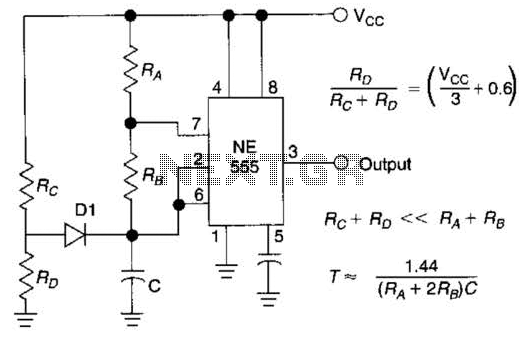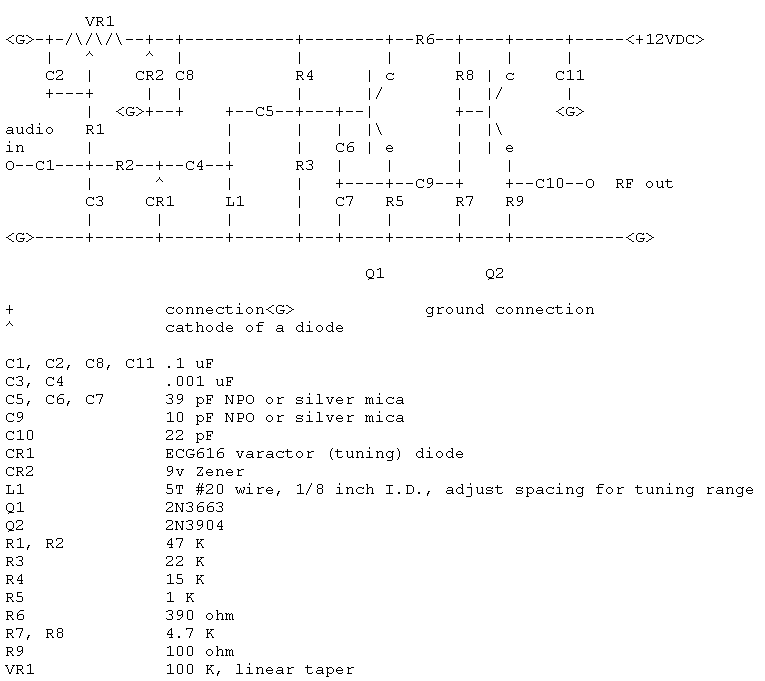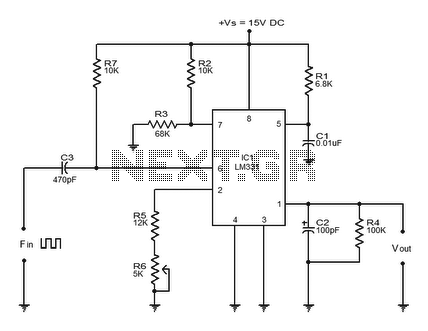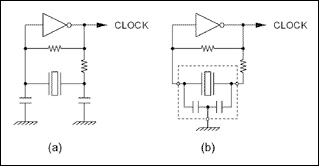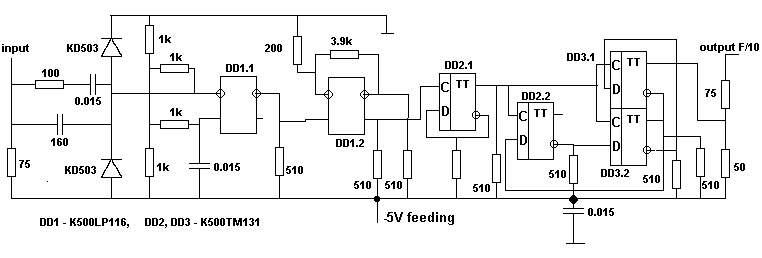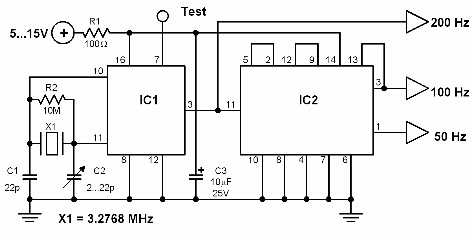
Precision Crystal Frequency Checker
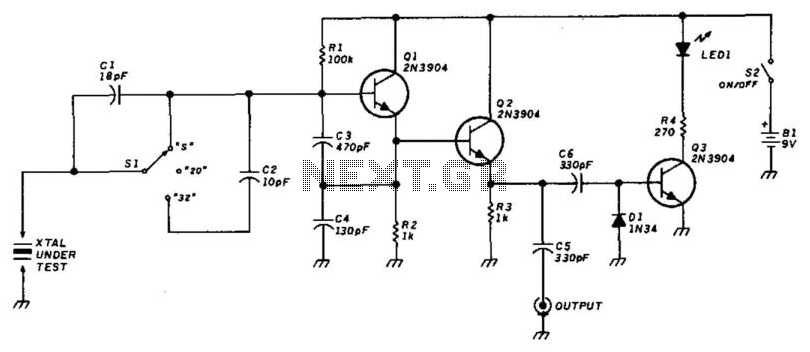
This circuit utilizes a Colpitts oscillator (Q1) paired with a buffer amplifier (Q2) to facilitate crystal testing. SI allows for the selection of three load conditions: series (S), 20 pF, and 32 pF. It is essential to keep the leads to SI and the crystal short. The circuit is designed to operate effectively within a frequency range of 2 to 20 MHz.
The circuit is built around a Colpitts oscillator, which is known for its ability to generate stable oscillations. The oscillator circuit consists of a transistor (Q1) configured with a feedback network that typically includes two capacitors and an inductor. The feedback network determines the oscillation frequency, which can be finely tuned to match the resonant frequency of the crystal under test.
The buffer amplifier (Q2) serves to isolate the oscillator from the load, ensuring that the performance of the oscillator is not adversely affected by the loading effects of the crystal or the measurement equipment. This configuration is particularly advantageous when testing crystals, as it allows the oscillator to maintain a consistent output while providing sufficient drive to the crystal.
The circuit features a switch (SI) that enables the user to select between three different load conditions: a series configuration (S) and two capacitive loads of 20 pF and 32 pF. These load conditions are critical for accurately assessing the characteristics of the crystal, as they simulate different operational environments in which the crystal may be used.
To achieve optimal performance, it is important to minimize lead lengths between the switch, the crystal, and the oscillator to reduce parasitic capacitance and inductance that could distort the frequency response. The design is intended to operate effectively across a frequency range of 2 to 20 MHz, making it suitable for testing a variety of crystal types commonly used in electronic applications.
In summary, this circuit provides a versatile and efficient means of testing crystals, leveraging the properties of a Colpitts oscillator and a buffer amplifier to deliver reliable performance across a specified frequency range with adjustable load conditions. This circuit uses a Colpitts oscillator (Ql) with a buffer amplifier (Q2) to test crystals. SI selects three load conditions—series (S), 20 pF, and 32 pF. Leads to SI and the crystal should be kept short. The circuit should be useful over 2-to 20-MHz.
The circuit is built around a Colpitts oscillator, which is known for its ability to generate stable oscillations. The oscillator circuit consists of a transistor (Q1) configured with a feedback network that typically includes two capacitors and an inductor. The feedback network determines the oscillation frequency, which can be finely tuned to match the resonant frequency of the crystal under test.
The buffer amplifier (Q2) serves to isolate the oscillator from the load, ensuring that the performance of the oscillator is not adversely affected by the loading effects of the crystal or the measurement equipment. This configuration is particularly advantageous when testing crystals, as it allows the oscillator to maintain a consistent output while providing sufficient drive to the crystal.
The circuit features a switch (SI) that enables the user to select between three different load conditions: a series configuration (S) and two capacitive loads of 20 pF and 32 pF. These load conditions are critical for accurately assessing the characteristics of the crystal, as they simulate different operational environments in which the crystal may be used.
To achieve optimal performance, it is important to minimize lead lengths between the switch, the crystal, and the oscillator to reduce parasitic capacitance and inductance that could distort the frequency response. The design is intended to operate effectively across a frequency range of 2 to 20 MHz, making it suitable for testing a variety of crystal types commonly used in electronic applications.
In summary, this circuit provides a versatile and efficient means of testing crystals, leveraging the properties of a Colpitts oscillator and a buffer amplifier to deliver reliable performance across a specified frequency range with adjustable load conditions. This circuit uses a Colpitts oscillator (Ql) with a buffer amplifier (Q2) to test crystals. SI selects three load conditions—series (S), 20 pF, and 32 pF. Leads to SI and the crystal should be kept short. The circuit should be useful over 2-to 20-MHz.
